SDG GOAL 3
GOOD HEALTH
Goal 3. Ensure healthy lives and promote well-being for all at all ages
|
|
|
|
DIRECT NAVIGATION TO INDIVIDUAL WEBPAGE FOR EACH GOAL
|
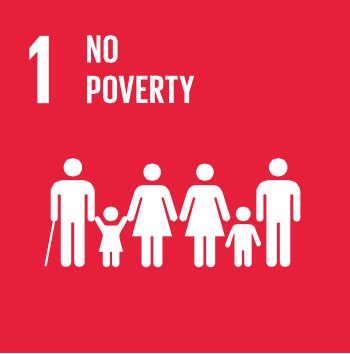
|
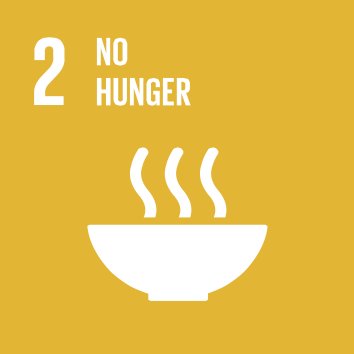
|
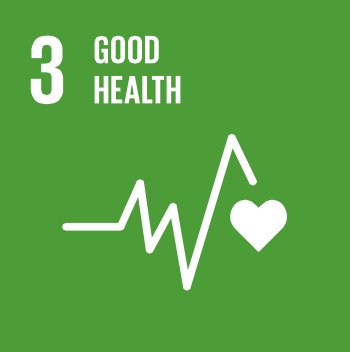
|
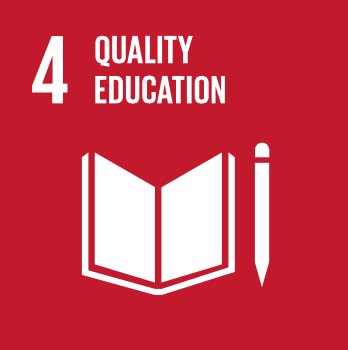
|
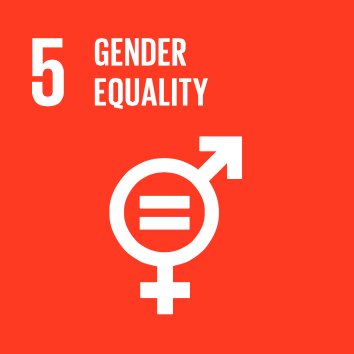
|
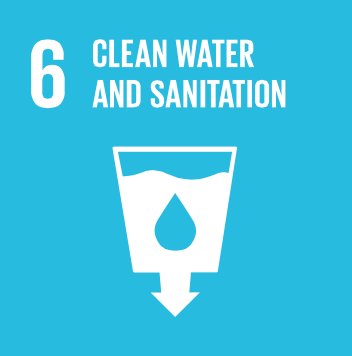
|

|

|
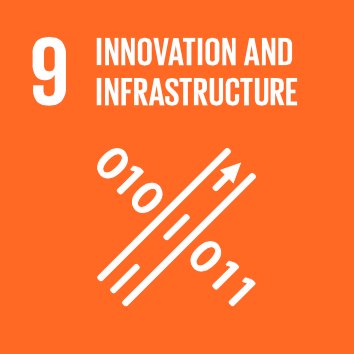
|
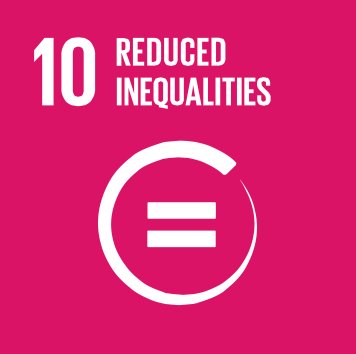
|
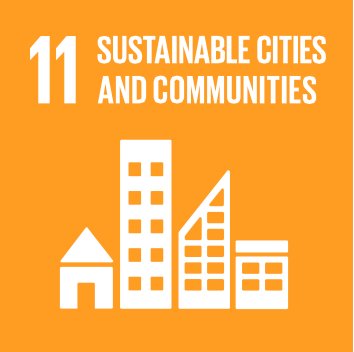
|
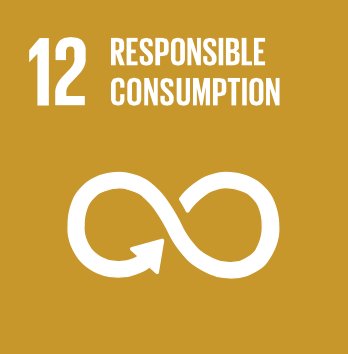
|

|
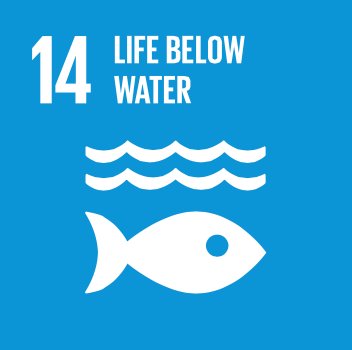
|

|

|

|
|
SDG GOAL 3 ... GOOD HEALTH
Goal 3. Ensure healthy lives and promote well-being for all at all ages
|

|
Goal 3. GOOD HEALTH ... ensure healthy lives and promote well-being for all at all ages
|
|
|
Goals and targets
|
Indicators
|
|
|
3.1
|
By 2030, reduce the global maternal mortality ratio to less than 70 per 100,000 live births
|
3.1.1 Maternal mortality ratio
3.1.2 Proportion of births attended by skilled health personnel
|
|
|
3.2
|
By 2030, end preventable deaths of newborns and children under 5 years of age, with all countries aiming to reduce neonatal mortality to at least as low as 12 per 1,000 live births and under-5 mortality to at least as low as 25 per 1,000 live births
|
3.2.1 Under-five mortality rate
3.2.2 Neonatal mortality rate
|
|
|
3.3
|
By 2030, end the epidemics of AIDS, tuberculosis, malaria and neglected tropical diseases and combat hepatitis, water-borne diseases and other communicable diseases
|
3.3.1 Number of new HIV infections per 1,000 uninfected population, by sex, age and key populations
3.3.2 Tuberculosis incidence per 1,000 population
3.3.3 Malaria incidence per 1,000 population
3.3.4 Hepatitis B incidence per 100,000 population
3.3.5 Number of people requiring interventions against neglected tropical diseases
|
|
|
3.4
|
By 2030, reduce by one third premature mortality from non-communicable diseases through prevention and treatment and promote mental health and well-being
|
3.4.1 Mortality rate attributed to cardiovascular disease, cancer, diabetes or chronic respiratory disease
3.4.2 Suicide mortality rate
|
|
|
3.5
|
Strengthen the prevention and treatment of substance abuse, including narcotic drug abuse and harmful use of alcohol
|
3.5.1 Coverage of treatment interventions (pharmacological, psychosocial and rehabilitation and aftercare services) for substance use disorders
3.5.2 Harmful use of alcohol, defined according to the national context as alcohol per capita consumption (aged 15 years and older) within a calendar year in litres of pure alcohol
|
|
|
3.6
|
By 2020, halve the number of global deaths and injuries from road traffic accidents
|
3.6.1 Death rate due to road traffic injuries
|
|
|
3.7
|
By 2030, ensure universal access to sexual and reproductive health-care services, including for family planning, information and education, and the integration of reproductive health into national strategies and programmes
|
3.7.1 Proportion of women of reproductive age (aged 15-49 years) who have their need for family planning satisfied with modern methods
3.7.2 Adolescent birth rate (aged 10-14 years; aged 15-19 years) per 1,000 women in that age group
|
|
|
3.8
|
Achieve universal health coverage, including financial risk protection, access to quality essential health-care services and access to safe, effective, quality and affordable essential medicines and vaccines for all
|
3.8.1 Coverage of essential health services (defined as the average coverage of essential services based on tracer interventions that include reproductive, maternal, newborn and child health, infectious diseases, non-communicable diseases and service capacity and access, among the general and the most disadvantaged population)
3.8.2 Number of people covered by health insurance or a public health system per 1,000 population
|
|
|
3.9
|
By 2030, substantially reduce the number of deaths and illnesses from hazardous chemicals and air, water and soil pollution and contamination
|
3.9.1 Mortality rate attributed to household and ambient air pollution
3.9.2 Mortality rate attributed to unsafe water, unsafe sanitation and lack of hygiene (exposure to unsafe Water, Sanitation and Hygiene for All (WASH) services)
3.9.3 Mortality rate attributed to unintentional poisoning
|
|
|
3.a
|
Strengthen the implementation of the World Health Organization Framework Convention on Tobacco Control in all countries, as appropriate
|
3.a.1 Age-standardized prevalence of current tobacco use among persons aged 15 years and older
|
|
|
3.b
|
Support the research and development of vaccines and medicines for the communicable and non-communicable diseases that primarily affect developing countries, provide access to affordable essential medicines and vaccines, in accordance with the Doha Declaration on the TRIPS Agreement and Public Health, which affirms the right of developing countries to use to the full the provisions in the Agreement on Trade-Related Aspects of Intellectual Property Rights regarding flexibilities to protect public health, and, in particular, provide access to medicines for all
|
3.b.1 Proportion of the population with access to affordable medicines and vaccines on a sustainable basis
3.b.2 Total net official development assistance to medical research and basic health sectors
|
|
|
3.c
|
Substantially increase health financing and the recruitment, development, training and retention of the health workforce in developing countries, especially in least developed countries and small island developing States
|
3.c.1 Health worker density and distribution
|
|
|
3.d
|
Strengthen the capacity of all countries, in particular developing countries, for early warning, risk reduction and management of national and global health risks
|
3.d.1 International Health Regulations (IHR) capacity and health emergency preparedness
|
|
INDICATORS / WORKING NOTES
Potential and Illustrative Core Indicators:
|
|
Indicator 17:
|
Maternal mortality ratio (MDG indicator) and rate
Rationale and definition: The maternal mortality ratio is the annual number of maternal deaths from any
cause related to or aggravated by pregnancy or its management (excluding accidental or incidental causes)
during pregnancy and childbirth or within 42 days of termination of pregnancy, per 100,000 live births per
year. This indicator reflects the capacity of health systems to effectively prevent and address the
complications occurring during pregnancy and childbirth. It may also highlight inadequate nutrition and
general health of women and reflect the lack of fulfillment of their reproductive rights resulting in repeated
and poorly spaced pregnancies.
The maternal mortality rate is the number of maternal deaths in a population divided by the number of
women of reproductive age. It captures the likelihood of both becoming pregnant and dying during
pregnancy (including deaths up to six weeks after delivery).
Disaggregation: As data systems improve, it will be important to disaggregate by age, geographic location
(e.g. urban vs. rural), and income level.54
Comments and limitations: Both metrics are difficult to measure as vital registration and health information
systems are often weak in developing countries.
Preliminary assessment of current data availability by Friends of the Chair: A
Potential lead agency or agencies: WHO, the United Nations Population Division (UNPD), UNICEF, and World Bank maintain databases on maternal mortality.
|
|
|
Indicator 18:
|
Neonatal, infant, and under-five mortality rates (modified MDG Indicator)
Rationale and definition: The under-five mortality rate is the probability for a child to die before reaching the
age of five, if subject to current age-specific mortality rates. This indicator measures child health and survival
and is expressed as the number of deaths per 1,000 live births. It captures more than 90 percent of global
mortality among children under the age of 18. Data on disease incidence are frequently unavailable, so
mortality rates are used.55
Disaggregation: Data should be heavily disaggregated so as to identify particularly vulnerable populations.
Comments and limitations: The neonatal (<28 days) and infant (<1 year) mortality rates represent an
important subcomponent of under-five mortality rate, because past trends are for slower declines in
neonatal and infant deaths than among children age 1 to 4.56
Preliminary assessment of current data availability by Friends of the Chair: A
Potential lead agency or agencies: UNICEF, WHO, and the UN Population Division report on infant and child
mortality. Data collection on neonatal mortality rates will need to be improved.
54 See WHO website on maternal and perinatal health: www.who.int/reproductivehealth/topics/maternal_perinatal/en/index.html
55 UNICEF, WHO, World Bank and UNPD, (2007), Levels and Trends of Child Mortality in 2006: Estimates developed by the Interagency Group for Child Mortality Estimation, New York, NY: UNICEF, 9.
56 Ibid, 10.
Revised working draft (July 25, 2014)
43
|
|
|
Indicator 19:
|
Maternal mortality ratio (MDG indicator) and rate
Indicator 19: HIV prevalence, treatment, and mortality rates (modified MDG Indicator)
Rationale and definition: This indicator measures the number of individuals by age group living with HIV
expressed as a percentage of the total population in the age group, as well as treatment rates with antiretroviral
therapy by age group. This tracks progress towards reducing HIV infection and improving access to
treatment. Treatment describes the percentage of in each age group with HIV currently receiving
antiretroviral therapy (ART), which consists of the use of at least three antiretroviral (ARV) drugs to
maximally suppress HIV and stop the progression of the disease. It adds tracking of mortality from HIV/AIDS.
Disaggregation: By sex and age.
Comments and limitations: The age-specific measure of HIV prevalence is a better proxy for monitoring
overall HIV incidence because trends in HIV prevalence differ by age group.
Preliminary assessment of current data availability by Friends of the Chair: A
Potential lead agency or agencies: WHO and UNAIDS report on the data for global monitoring.57
|
|
|
Indicator 20:
|
Maternal mortality ratio (MDG indicator) and rate
Indicator 20: Incidence, prevalence and death rates associated with TB (MDG Indicator)
Rationale and definition: The incidence rate of TB is the number of new cases of TB per 100,000 people per
year. Prevalence is the number of TB cases in a population at a given point in time per 100,000. The TB death
rate is the number of deaths caused by TB per 100,000 in one year. Detecting and curing TB are key
interventions for addressing poverty and inequality. Prevalence and deaths are more sensitive markers of
the changing burden of tuberculosis than new cases, but data on incidence are more comprehensive and
give the best overview of the impact of global tuberculosis control.
Disaggregation: Data should be disaggregated by age group, sex, urban/rural, and income, as well as by TB
strain, with special attention to drug-resistant varieties. Additionally it should be disaggregated by site of
disease (pulmonary/extra-pulmonary), type of laboratory confirmation (usually sputum smear), and history
of previous treatment.
Comments and limitations: To be reviewed.
Preliminary assessment of current data availability by Friends of the Chair: A
Potential lead agency or agencies: WHO is responsible for reporting this indicator at the international level.58
|
|
|
Indicator 21:
|
Maternal mortality ratio (MDG indicator) and rate
Indicator 21: Incidence and death rates associated with malaria (MDG Indicator)
Rationale and definition: The incidence rate of malaria is the number of new cases of malaria per 100,000
people per year. The malaria death rate is the number of deaths caused by malaria per 100,000 people per
year.
Disaggregation: Data should be disaggregated by age group, sex, geographic location (e.g. urban vs. rural),
and income, as well as by causal agents of malaria.59
Comments and limitations: The quality of the data is particularly sensitive to the completeness of health
facility reporting. In addition, since the symptoms of malaria are similar to those of other diseases,
57 UNAIDS, (2013), 30. 58 See WHO website on TB: http://www.who.int/tb/en 59 United Nations, (2003).
Revised working draft (July 25, 2014)
44
incidences and deaths are sometimes misreported in poorly resourced countries. The invention of rapid
diagnostic testing for malaria should be leveraged to improve data quality.
Preliminary assessment of current data availability by Friends of the Chair: A
Potential lead agency or agencies: WHO is responsible for reporting this indicator at the international level.60
|
|
|
Indicator 22:
|
Maternal mortality ratio (MDG indicator) and rate
Indicator 22: Probability of dying between exact ages 30 and 70 from any of cardiovascular disease, cancer, diabetes, or chronic respiratory disease
Rationale and definition: The disease burden from non-communicable diseases (NCDs) among adults is
increasing due to aging and health transitions. Measuring the risk of dying from target NCDs is important to
assess the burden from mortality due to NCDs in a population. This indicator measures the risk of premature
death due to the most common NCDs. It is the percentage of 30-year-old people who would die before their
70th birthday from any of cardiovascular disease, cancer, diabetes, or chronic respiratory disease, assuming
that s/he would experience current mortality rates at every age and s/he would not die from any other
cause of death, like accidents or HIV/AIDS.61
Disaggregation: By sex. Other opportunities for disaggregation to be reviewed.
Comments and limitations: One limitation is that data on adult mortality is limited, notably in low-income
countries.62
Preliminary assessment of current data availability by Friends of the Chair: A
Potential lead agency or agencies: WHO.
|
|
|
Indicator 23:
|
Maternal mortality ratio (MDG indicator) and rate
Indicator 23: Current use of any tobacco product (age-standardized rate)
Rationale and definition: Tobacco use is a leading cause of preventable death in many developed countries,
and is a growing problem and contributor to the burden of disease in developing countries. This indicator
measures the prevalence of current smoking (daily, non-daily, or occasional) of any tobacco product,
including cigarettes, cigars, pipes, etc., for adults aged 15 years and over.63 It expands upon the WHO's
recommendation to further track use of smokeless tobacco products (including chewing, snuff, and
electronic cigarettes). The age-standardized prevalence rate of tobacco use (adjusted according to the WHO
regression method) allows for comparisons across countries and across time periods to determine trends.64
Disaggregation: By sex and age.
Comments and limitations: To be reviewed.
Preliminary assessment of current data availability by Friends of the Chair: A
Potential lead agency or agencies: WHO.
60 See WHO website on malaria: http://www.who.int/topics/malaria/en
61 WHO Indicator and Measurement Registry, Version 1.7.0 (2011). See:
http://apps.who.int/gho/indicatorregistry/App_Main/indicator_registry.aspx (2011).
62 Agyepong et al., (2014 in press).
63 WHO Indicator and Measurement Registry, (2011).
64 Ibid.
Revised working draft (July 25, 2014)
45
|
|
|
Indicator 24:
|
Maternal mortality ratio (MDG indicator) and rate
Indicator 24: Harmful use of alcohol
Rationale and definition: WHO recommends a reduction in the harmful use of alcohol as part of the Global
Monitoring Framework for Non-Communicable Diseases.65 WHO recommends tracking two dimensions of
alcohol overuse/abuse: total (recorded and unrecorded) alcohol consumption within a calendar year in liters
of pure alcohol (to assess long-term consumption), and age-standardized prevalence of heavy episodic
(binge) drinking (HED) among adolescents and adults. HED is defined as consuming 60 or more grams of
alcohol on a single occasion at least once in the last 30 days.
This indicator provides information regarding the patterns of alcohol consumption in a given country, and
consequently highlights the population that has a higher risk of experiencing alcohol-related acute harm,
such as alcohol poisoning and automobile accidents, as well as chronic health complications, such as liver
cancer and hypertension.
Disaggregation: By sex and age.
Comments and limitations: Another possible indicator of alcohol overuse/abuse would be to use the Alcohol
Use Disorders Identification Test (AUDIT) that also diagnoses both short- and long-term over use.66
Preliminary assessment of current data availability by Friends of the Chair: B
Potential lead agency or agencies: The data is gathered through population-based national surveys.67 WHO
would ensure comparable data is collected globally.
|
|
|
Indicator 25:
|
Percent of population overweight and obese
Rationale and definition: This indicator tracks the share of a country’s population that is overweight or
obese. The body mass index (BMI) is a measure of body fat based on height and weight that is calculated by
dividing a person’s weight by their height squared. WHO defines overweight for adults as having a BMI
greater than or equal to 25. A BMI greater than or equal to 30 defines obesity. Overweight in children is
defined by WHO’s Child Growth Standards as the percentage of children aged 0-5 whose weight-for-height is
above +2 standard deviations of the WHO Child Growth Standards median. Prevalence of overweight in
adolescents is the percentage of adolescents who are one standard deviation above the BMI for age and
sex.68
Disaggregation: By sex and age.
Comments and limitations: The BMI is an imperfect measure, as it does not allow for the relative proportions
of bone, muscle and fat in the body, and it ignores waist size, which is a clear indicator of obesity level.
Preliminary assessment of current data availability by Friends of the Chair: B
Potential lead agency or agencies: WHO.
|
|
|
Indicator 26:
|
[Functioning programs of multisectoral mental health promotion and prevention in existence]— Indicator to be developed
Rationale and definition: There is growing recognition of the need for comprehensive mental health services
to be offered as part of a universal health care (UHC) package. The World Health Organization’s Mental
65 WHO, (2014a). 66 For more information, see: http://whqlibdoc.who.int/hq/2001/who_msd_msb_01.6a.pdf 67 WHO, (2013c).
68 WHO Indicator and Measurement Registry, (2011).
Revised working draft (July 25, 2014)
46
Health Action Plan proposes a number of indicators on mental health, including this indicator, which
measures the effectiveness of programs to promote mental health and get necessary services to patients.69
Disaggregation: Opportunities for disaggregation to be reviewed once the indicator has been developed.
Comments and limitations: The actual methodology for this type of data collection needs to be developed.
Countries may choose to complement the above indicator with an outcomes-based indicator, such as
number of persons receiving treatment per 1000 population, however additional research will be required to
determine an appropriate target range for such an indicator.
Preliminary assessment of current data availability by Friends of the Chair: C
Potential lead agency or agencies: WHO.
|
|
|
Indicator 27:
|
Indicator 27: Road traffic deaths per 100,000 population
Rationale and definition: This indicator measures road safety and is the rate of road traffic fatal injury
deaths calculated per 100,000 population. Road traffic injuries are a major health and development
challenge: they are the eighth overall cause of death globally, and the leading cause of death for youth aged
15–29.70 On current trends road traffic fatalities may become the fifth leading cause of death by 2030.
Disaggregation: WHO tracks deaths of pedestrians, cyclists, drivers of 4-wheeled vehicles, drivers of 2- or 3-
wheeled motorized vehicles, and other.
Comments and limitations: To be determined.
Preliminary assessment of current data availability by Friends of the Chair: To be determined.
Potential lead agency or agencies: WHO
|
|
|
Indicator 28:
|
Indicator 28: [Consultations with a licensed provider in a health facility or the community per person, per year]— Indicator to be developed
Rationale and definition: Physical access to primary health care services, including emergency obstetric care
(EmOC) facilities, is necessary for achieving the health targets.71 Primary health services are defined broadly
to include preventative, curative, and palliative care of communicable and non-communicable diseases,
sexual and reproductive health services, family planning, routine immunizations, and mental health. All of
these elements are equally important to ensure good health and wellbeing.
The proposed indicator tracks the average number of consultations – including preventative and curative
services – with a licensed provider. Licensed providers in health facilities include all adequately trained
personnel registered and integrated in a national health system. This includes consultations with community
health workers (CHWs) but excludes pharmacists.
Disaggregation: By gender and region. Further opportunities for disaggregation to be reviewed.
Comments and limitations: Data availability may be a limiting factor for applying this indicator in rural areas
and some low-income countries. Yet, modern information and communication technologies make it possible
to collect such data effectively and at low cost. Since the same data can be used to assess the performance
of a health system and its various facilities, its collection should be encouraged.
69 WHO, (2013d).
70 WHO, (2013e), Global status report on road safety.
http://www.who.int/violence_injury_prevention/road_safety_status/2013/report/en/
71 WHO, (2009), Monitoring emergency obstetric care: a handbook, Geneva, Switzerland: WHO Press, 10.
Revised working draft (July 25, 2014)
47
A second limitation of the indicator is that it measures the average number of consultations across an entire
population. Such averages do not give information on how many people are excluded from the health
system for some or all types of consultations.
Alternative measures for access to health care services are expressed as “percent of population living within
[x] kilometers of service delivery point”. A service delivery point is typically defined as any location where a
licensed provider (including CHWs but excluding pharmacists) provides services. In the case of EmOC
facilities, WHO defines the acceptable level of access as five facilities (including at least one comprehensive
facility) for every 500,000 population. The difficulty with such geospatial indicators is that they do not
adequately capture utilization and access, which may be conditioned by factors beyond physical proximity
and affordability.
Preliminary assessment of current data availability by Friends of the Chair: To be determined.
Potential lead agency or agencies: WHO.
|
|
|
Indicator 29:
|
Indicator 29: [Percentage of population without effective financial protection for health care] – Indicator to be developed
Rationale and definition: A central component of universal health coverage (UHC) is financial affordability of
preventative and curative health services. It is critical that global efforts to eradicate extreme poverty and
promote social inclusion are not undermined by impoverishing expenditure to use needed health services,
and that the poorest people can afford critical care.72 For this reason, a monitoring framework for the SDGs
must include a Core Indicator on financial protection for health care.
Yet, measuring financial affordability and protection for a broad range of health services is difficult. An
indicator for financial affordability and protection requires accurate data from a number of sources,
including public health financing rules and household surveys. Data availability should be good in countries
implementing universal health care (UHC), but may be a challenge in other countries.
Below we describe available options for this indicator and outline major limitations. We believe that these
limitations can be overcome, but for now we present a placeholder for this indicator. The SDSN looks
forward to working with interested organizations to identify the appropriate indicator and to promote it as
part of the indicator framework for the SDGs.
Available or conceivable options for defining a Core Indicator on financial protection in the health sector
include:
1. The number of households falling below the poverty line (or being pushed deeper into poverty) due
to out-of-pocket spending on health care
2. Out-of-pocket expenditure as a share of total health expenditure
3. The percentage of households experiencing catastrophic health expenditure (usually defined as a
share of annual household income net of subsistence needs)
4. More synthetic measures of the financial protection of health care systems.
Many of these indicators can also be framed in reverse, e.g. the share of the population that does not
experience catastrophic health expenditure.
A recent report by the WHO and the World Bank recommended the first option.73 Such an indicator captures
important elements of financial protection. Data availability has improved in recent years so that this
72 Agyepong, I., Liu, G., Reddy, S. et al., (2014), Health In the Framework of Sustainable Development, Paris, France and New York,
USA: SDSN.
73 World Health Organization, World Bank, (2013), Monitoring progress towards universal health coverage at country and global
levels, Joint WHO / World Bank Group Discussion Paper, Geneva, Switzerland.
Revised working draft (July 25, 2014)
48
|
|
|
Indicator ??
|
MISSING INFO
??????????????????????????????
indicator can be computed for a large number of countries. However, the indicator does not adequately
measure the common and often deadly condition of an already impoverished household that simply does
not access health services because of the cost of health services.74 Being “pushed into or deeper into
poverty” is quite different from being stuck in poverty without health care access. The latter situation
describes a large proportion of those in need.
Indicator options 2 and 3 face the same challenge of under reporting by households that do not access
health services – adequately or at all – as a result of cost. Moreover, the indicators do not provide a clear
indication of the impact that out-of-pocket health expenditure might have on the health and economic
situation of households.
Finally, it is also possible to evaluate the financial protection of health care systems in more synthetic ways,
based on the rules of public financing for outpatient services, inpatient care, laboratory services, and
medicines. Systems with full public financing will score high; those with heavy co-payments or out-of-pocket
payments will score low. These synthetic calculations made annually based on the health care rules can be
crosschecked and validated by comparison with the share of out-of-pocket outlays and by survey questions
(e.g. “Were you and family members unable to access needed health services or medicines because of lack
of family income?”).
Disaggregation: By sex and wealth quintile.
Comments and limitations: To be determined once the indicator has been specified.
Preliminary assessment of current data availability by Friends of the Chair: To be determined.
Potential lead agency or agencies: WHO gathers data on health expenditures by triangulating information
from several sources to estimate both government and private expenditures on health.75
|
|
|
Indicator 30:
|
Percent of children receiving full immunization as recommended by WHO
Rationale and definition: The World Health Organization recommends that all children receive vaccination against BCG, Hepatitis B, Polio, DTP, Haemophilus influenza, Pneumococcal (Conjugate), Rotavirus, Measles, Rubella, and that adolescent girls (aged 9-13) receive vaccination against HPV. 76 This indicator measures the percent of children and adolescents who have received all aforementioned immunizations at the appropriate age, as recommended by WHO.
Disaggregation: By sex and age. Other opportunities for disaggregation to be reviewed.
Comments and limitations: Countries may wish to include additional vaccinations, such as tetanus, yellow
fever, etc., as recommended by the WHO’s Global Vaccine Action Plan.77
Preliminary assessment of current data availability by Friends of the Chair: A
Potential lead agency or agencies: WHO currently collects data on immunization. UNICEF and GAVI are other
important stakeholders.
74 Moreno-Serra R., Millett C., Smith P.C., (2011), Towards Improved Measurement of Financial Protection in Health. PLoS Med 8(9):
e1001087. World Health Organization, World Bank (2013).
75 WHO Indicator and Measurement Registry (2011).
76 WHO, (2013a).
77 See: http://www.who.int/immunization/documents/general/ISBN_978_92_4_150498_0/en/index.html
Revised working draft (July 25, 2014)
49
|
|
|
Indicator 31:
|
Contraceptive prevalence rate (MDG Indicator)
Rationale and definition: The contraceptive prevalence rate is defined as the percentage of women of
reproductive age who use (or whose partners use) a contraceptive method at a given point in time. Women
‘of reproductive age’ is usually defined as women aged 15 to 49, but sexually active adolescents under 15
should also be included. Increased contraceptive prevalence is also an important proximate determinant of
inter-country differences in fertility and of ongoing fertility declines in developing countries. Contraceptive
prevalence is influenced by people's fertility desires, availability of high-quality products and services; social
norms and values; levels of education; and other factors, such as marriage patterns and traditional birthspacing
practices. It is an indicator of population and health, particularly women’s access to reproductive
health services. The level of contraceptive use has a strong, direct effect on the total fertility rate (TFR) and,
through the TFR, on the rate of population growth. It also serves as a proxy measure of access to
reproductive health services that are essential for meeting many health targets, especially the targets
related to child mortality, maternal health, HIV/AIDS, and gender equality.78
Disaggregation: By age and marital status.
Comments and limitations: Common limitations to this indicator include under-reporting and
underestimation of overall use, vague time references, and insufficient accuracy.
Preliminary assessment of current data availability by Friends of the Chair: A
Potential lead agency or agencies: Data for this indicator comes from household surveys, such as
Demographic and Health Surveys (DHS) and Multiple Indicators Cluster Surveys (MICS), and contraceptive
prevalence surveys. The UN Population Division and UNFPA could ensure the collection of internationally
comparable data.
|
|
|
Indicator 32:
|
Healthy life expectancy at birth
Rationale and definition: This indicator measures the average number of years that a person can expect to
live in 'full health' by taking into account years lived in less than full health due to disease and/or injury.
Disaggregation: By sex and income level.
Comments and limitations: The main limitation of this indicator is the lack of reliable data on mortality and
morbidity, especially from low-income countries, and the long lags (WHO collects only every 5 years). Other
issues include lack of comparability of self-reported data from health interviews and the measurement of
health-state preferences for such self-reporting.
Preliminary assessment of current data availability by Friends of the Chair: A
Potential lead agency or agencies: WHO collects this data.79
|
|
|
Indicator 33:
|
Household Dietary Diversity Score
Rationale and definition: Healthy diets are critical for good health and wellbeing. This indicator measures a
snapshot of a household’s diet, and from it draws conclusions on a household’s ability to afford a variety of
foods. The diversity of one’s diet is a good indicator of the availability of micronutrients (vitamins and
minerals) and servings of fruits and vegetables.
78 UN Population Division, (2011), World Contraceptive Use 2011, New York: UN. See:
http://www.un.org/esa/population/publications/contraceptive2011/contraceptive2011.htm
79 WHO Indicator and Measurement Registry, (2011).
Revised working draft (July 25, 2014)
50
Disaggregation: By household income level and sex of head of household.
Comments and limitations: This indicator relies on detailed household surveys, which may not be feasible in
some instances.80 Several alternative indicators are available, including:
• Fraction of calories from added saturated fats and sugars (%);
• Per capita meat consumption (kg per capita);
• Share of calories from non-staple foods (%) (also referred under Target 1b);
• Food consumption score.81
Preliminary assessment of current data availability by Friends of the Chair: C
Potential lead agency or agencies: FAO.
|
|
|
Indicator 34:
|
Mean urban air pollution of particulate matter (PM10 and PM2.5)
Rationale and definition: Rapid urbanization has resulted in increasing urban air pollution in major cities,
especially in developing countries. It is estimated that over 1 million premature deaths can be attributed to
urban outdoor air pollution.82 The problem is growing and has severe economic and health impacts,
particularly for young children. We therefore propose that the post-2015 framework include an indicator
tracking the mean urban air pollution of particulate matter.
Disaggregation: By city and province.
Comments and limitations: WHO tracks this data for PM10 particles (i.e. particles with a diameter equal to or
greater than 10 microns). There are concerns about the health impacts of fine particles measuring 2.5
microns in diameter, but data on such particles is less widely available. We recommend that both indicators
be tracked. Global statistics agencies should develop a framework for gathering the data. Complementary
indicators include population-based measures, such as “percentage of population whose exposure to PM10
and PM2.5 is above certain µg/m3 (i.e. 15) threshold”, that can provide city authorities with important
information on how to direct policies to lower the health impact of air pollution.
Preliminary assessment of current data availability by Friends of the Chair: A
Potential lead agency or agencies: UN-Habitat, UNEP, WHO.
Additional indicators that countries may consider:
• Government expenditure on health, as a percentage of GDP. Reaching universal health coverage
requires countries to mobilize adequate funds for a national health system, as per the 2001 Abuja
Declaration. This indicator tracks national public spending on health.
• Percentage of fully and consistently equipped and supplied service delivery points to provide basic
package of services. Based on a package of required equipment (e.g. surgical instruments,
ultrasound machines) and supplies (e.g. latex gloves, vaccines) determined by the World Health
Assembly and/or at the national level by ministries of health, this indicator tracks the number of
service delivery points meeting minimum requirements.
• Ratio of health professionals to population (MDs, nurse midwives, nurses, community health
workers, EmOC caregivers). The overall ratio of trained medical professionals to population; WHO
80 FAO, (2011).
81 Developed by the World Food Programme (WFP). For more information see: http://www.wfp.org/content/technical-guidancesheet-food-consumption-analysis-calculation-and-use-food-consumption-score-food-s.
82 WHO Global Health Observatory. See: http://apps.who.int/gho/data/view.main
Revised working draft (July 25, 2014)
51
|
|
|
Indicator ??:
|
???????Maternal mortality ratio (MDG indicator) and rate
currently tracks the ratio of physicians, nurses, and midwives, but Community Health Workers
(CHWs) should be included where relevant.
• Percentage of population with access to affordable essential drugs and commodities on a
sustainable basis. The percentage of the population that has reliable physical and financial access to
essential drugs (e.g. vaccines, antibiotics, anti-retrovirals) and commodities (non-pharmaceutical
equipment and supplies). This could be tracked in relation to Indicator 34 but should be
complemented by survey data.
• Percentage of new health care facilities built in compliance with building codes and standards. This
indicator measures whether or not new health facilities are in compliance with national standards
for human health and safety, as well as standards to withstand natural hazards (floods, earthquakes,
and typhoons), a key component of disaster preparedness.
• Percentage of 1 year-old children immunized against measles (MDG Indicator). The percentage of
children under one year of age who have received at least one dose of measles-containing vaccine.
• Percentage of births attended by skilled health personnel (MDG Indicator). The percentage of total
live births that are attended by a skilled birth attendant trained in providing lifesaving obstetric care.
• Antenatal care coverage (at least one visit and at least four visits) (MDG Indicator). The percentage
of women aged 15–49 with a live birth in a given time period that received antenatal care, provided
by skilled health personnel, at least once during their pregnancy and by any provider four or more
times during their pregnancy.
• Post-natal care coverage (one visit). Similar to antenatal care coverage, the percentage of women
aged 15–49 with a live birth in a given time period that received post-natal care provided by skilled
health personnel at least once following the birth of their child and by any provider four or more
times after birth.
• Condom use at last high-risk sex (MDG Indicator). The percentage of young men and women aged
15–24 reporting the use of a condom the last time they had sexual intercourse with a non-marital,
non-cohabiting sexual partner of those who had sex with such a partner in the last 12 months.
• Coverage of iron-folic acid supplements for pregnant women (%). Percent of pregnant women
regularly taking the recommended dose of iron-folic acid supplements.
• Percentage of exclusive breastfeeding for the first 6 months of life. The percentage of mothers
feeding infants exclusively on breast milk (not formula or solid foods) for the first 6 months of life.
• Percentage of HIV+ pregnant women receiving PMTCT. This indicator tracks the percent of HIV+
pregnant women on a regimen for the prevention of mother-to-child HIV transmission (PMTCT). In
the absence of intervention, 15-45% of HIV+ pregnant women transmit the virus to their children.
This rate can be reduced to levels below 5% with intervention.
• Percentage of tuberculosis cases detected and cured under directly observed treatment short
course (MDG Indicator). The percentage of tuberculosis (TB) cases detected and cured, also known
as the TB treatment success rate, is the number of new TB cases in a given year that were cured or
completed a full treatment of directly observed treatment short (DOTS).
• Percentage of children under 5 with fever who are treated with appropriate anti-malarial drugs
(MDG Indicator). The percentage of children aged 0–59 months who were ill with a fever in the two
weeks before the survey and who received any anti-malarial drugs during that time.
• Percentage of people in malaria-endemic areas sleeping under insecticide-treated bed nets (MDG
Indicator). The percentage of people who slept under an insecticide-treated mosquito net the night
prior to the survey, disaggregated by age.
• Percentage of suspected malaria cases that receive a parasitological test. In malaria-endemic areas,
all persons with fever seeking medical care should undergo diagnostic testing before treatment for
malaria. Affordable, rapid-diagnostic test kits enable definitive diagnoses for all malaria cases.
Revised working draft (July 25, 2014)
52
• Percentage of confirmed malaria cases that receive first-line antimalarial therapy according to
national policy. The percent of positively-diagnosed malaria cases that are treated with appropriate
drugs.
• Percentage of pregnant women receiving malaria IPT (in endemic areas). Malaria in pregnancy
affects both the mother and the fetus. Intermittent preventive treatment in pregnancy (IPT) can
effectively prevent malaria in pregnant women; all pregnant women in moderate- to high- malariatransmission
areas should receive IPT.
• Percentage of women with cervical cancer screening. The percent of women receiving screening for
cervical cancer. The World Health Organization’s Global Monitoring Framework for NonCommunicable
Diseases recommends this indicator.
• Percentage of people with hypertension diagnosed and receiving treatment. The World Health
Organization’s Global Monitoring Framework for non-communicable diseases calls for a 25%
reduction in hypertension (raised blood pressure); to achieve this goal we recommend tracking the
number of people diagnosed with hypertension and those receiving treatment.
• Neglected Tropical Disease (NTD) cure rate. It is vital that the billion people affected by neglected
tropical diseases each year retrieve adequate treatment all the way to cure. The exact means by
which this can be measured still needs to be defined.
• Waiting time for elective surgery. This indicator measures how long a patient has to wait to have an
elective procedure. Wait times help measure the availability of health services; cataract surgery is
one example of an elective procedure that this indicator could measure.
• Percentage of beneficiaries using hospitals, health facilities, and clinics providing basic drinking
water, adequate sanitation, and adequate hygiene. This indicator measures access to drinking
water, gender separated sanitation amenities, and hand washing facilities for patients in health
facilities, using WHO-UNICEF JMP definitions.
• Public and private R&D expenditure on health (% GNP): This indicator tracks public and private
resource mobilization for R&D on health as a share of GNP
• [Mortality from indoor air pollution] - to be developed: this indicator tracks mortality from illnesses
attributable to the household air pollution (often caused by cooking with solid fuels) including
pneumonia, stroke, heart disease, chronic obstructive pulmonary disease (COPD), and lung cancer.
• Incidence rate of diarrheal disease in children under five years. Diarrhea is defined as 3 or more
loose stools in a period of 24 hours or less.
• Incidence and death rates associated with hepatitis. Prevalence and mortality rates for the various
strains of hepatitis (A, B, E, etc.).
• Prevalence of physical inactivity. The percentage of people not reaching WHO recommendations for
physical activity.83
• Fraction of calories from added saturated fats and sugars (%). Percent of caloric intake coming from
added saturated fats and sugars; an indicator of a healthy diet.
• Age-standardized mean population intake of salt (sodium chloride) per day in grams in persons
aged 18+ years. The amount of salt consumed per day; overconsumption of salt can affect
hypertension and other non-communicable diseases.
• Prevalence of persons (aged 18+ years) consuming less than five total servings (400 grams) of fruit
and vegetables per day. Consumption of fruits and vegetables is crucial both for ensuring a healthy
diet and maintaining a healthy weight; this indicator tracks the percent of people not eating the
recommended amount of fruits and vegetables.
• Percent change in per capita [red] meat consumption relative to a 2015 baseline. Overconsumption
of red meat is a risk factor for many non-communicable diseases; this indicator tracks
83 WHO, (2010).
Revised working draft (July 25, 2014)
53
|
|
|
Indicator ??:
|
???????? Maternal mortality ratio (MDG indicator) and rate
changes in per capita red meat consumption, with the goal of reducing overconsumption in some
countries.
• Age-standardized (to world population age distribution) prevalence of diabetes (preferably based
on HbA1c), hypertension, cardiovascular disease, and chronic respiratory disease. In addition to
tracking mortality rates from non-communicable diseases, it will be important to track prevalence
rates. As persons suffering from NCDs receive better treatment and live longer, mortality rates may
no longer be an adequate measure of the health system’s effectiveness at addressing these diseases
(i.e. longer lives means higher mortality from NCDs as countries address communicable diseases).
This indicator will help assess long-term management of these conditions.
• Percentage of population with basic hand washing facilities in the home. This indicator measures
access to soap and water at hand washing facilities in the home, using WHO-UNICEF JMP definitions.
|
|
|
|
|

